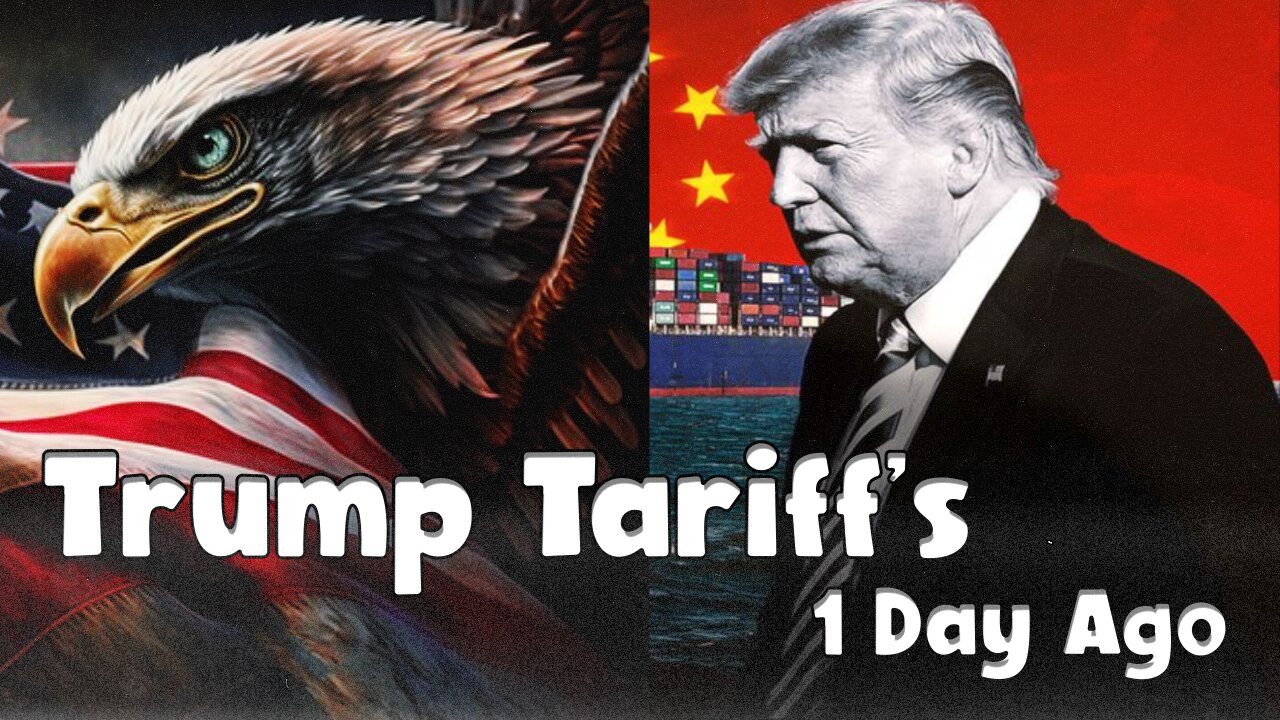Premium Only Content

The Secret Behind Trump Tariff's And China's Revolution
Overview of Trump Tariffs
Purpose:
Protect Domestic Industries: Prevent foreign goods from undercutting U.S. industries, particularly steel, aluminum, technology, and consumer goods.
Address Trade Deficits: Reduce the gap between U.S. imports and exports, concentrating on China, which had a large trade surplus with the U.S.
Combat Alleged Unfair Practices: Accuse certain countries, especially China, of trade policies like intellectual property theft, forced technology transfers, and state-sponsored subsidies to domestic companies.
Key Policies and Actions:
Steel and Aluminum Tariffs (2018):
Imposed tariffs of 25% on steel imports and 10% on aluminum imports from various countries.
Aimed to protect domestic metal industries from cheaper foreign products.
China Tariffs (2018-2019) ("Trade War"):
Targeted China's exports across multiple rounds, covering billions of dollars in goods.
Included tariffs ranging from 10% to 25% on goods such as technology, machinery, textiles, furniture, electronics, and consumer items.
Intended to penalize China for alleged intellectual property theft and coerced technology transfer.
Automobile Tariff Threats:
Proposed tariffs on imported cars and parts to protect U.S. auto workers and manufacturers, though not fully imposed.
Retaliation Tariffs:
Many countries, such as China, Canada, Mexico, and members of the EU, retaliated by imposing tariffs on U.S. goods (e.g., agricultural products, whiskey, bourbon, and Harley-Davidson motorcycles).
Economic Impact:
Positive Effects:
Boosted revenue for U.S. steel and aluminum producers.
Encouraged some companies to shift supply chains and manufacturing back to the U.S. (onshoring).
Sent a clear message about combating trade imbalances and IP theft.
Negative Effects:
Increased costs of production and consumer goods, as imports became more expensive.
Led to retaliatory tariffs, hurting U.S. exporters, particularly farmers (e.g., soybean exports to China shrank significantly).
Contributed to price hikes across industries that rely on steel, aluminum, and other imported raw materials.
Created uncertainty for businesses engaged in global trade.
China-U.S. Trade War:
One of the most significant aspects of the Trump tariffs was the China-U.S. trade war. The U.S. imposed tariffs on imports from China, totaling over
360
b
i
l
l
i
o
n
∗
∗
,
w
h
i
l
e
C
h
i
n
a
r
e
t
a
l
i
a
t
e
d
w
i
t
h
t
a
r
i
f
f
s
o
n
o
v
e
r
∗
∗
110 billion in U.S. goods.
Partial resolution in the "Phase One" deal (2020) led China to commit to purchasing more U.S. products, including agricultural goods, but many tariffs remained in place.
Critics’ Views:
Domestic Impact: Critics argued that the tariffs were effectively a tax on U.S. consumers and businesses, as they increased import costs.
Global Trade Relations: The tariffs strained relationships with key allies and trading partners.
Effectiveness: Some economists and policy experts questioned whether the tariffs achieved their goals, pointing to mixed outcomes on trade deficits and limited evidence of manufacturing resurgence.
The "Trump tariffs" remain a subject of debate, with some tariffs still in effect as of 2023, while others have been modified. They represented one of the most significant shifts in U.S. trade policy in decades, emphasizing protectionism and challenging globalization trends.
-
 1:53:27
1:53:27
Camhigby
13 hours ago72 ARRESTS: Chicago Train Attack Is Worse Than Anyone Knows
105 -
 23:10
23:10
DeVory Darkins
1 day agoBondi issues chilling warning to comey after shocking twist emerges
10.5K66 -
 8:01
8:01
MattMorseTV
9 hours ago $22.61 earnedVance has finally HAD ENOUGH.
39.9K84 -
 15:18
15:18
MetatronHistory
2 days agoThe REAL Origins of the SUMERIANS
3.72K1 -
 22:43
22:43
Nikko Ortiz
13 hours agoGhost Of Tabor Is Like Fent...
7.65K1 -
 17:44
17:44
The Pascal Show
13 hours ago $0.72 earnedNOW LAPD IS LYING?! TMZ Doubles Down On Source's "Celeste Rivas Was FROZEN" Claims
4.64K1 -
 18:05
18:05
GritsGG
13 hours agoThis Duo Lobby Got a Little Spicy! We Have Over 20,000 Wins Combined!
5.18K -
 LIVE
LIVE
Lofi Girl
3 years agolofi hip hop radio 📚 - beats to relax/study to
250 watching -
 37:08
37:08
MetatronGaming
2 days agoWarhammer Shadow of The Horned Rat DOS Version is FANTASTIC! 1995
13.9K1 -
 2:03:36
2:03:36
FreshandFit
12 hours agoAkaash Replies to FreshandFit w/ Girls
189K23